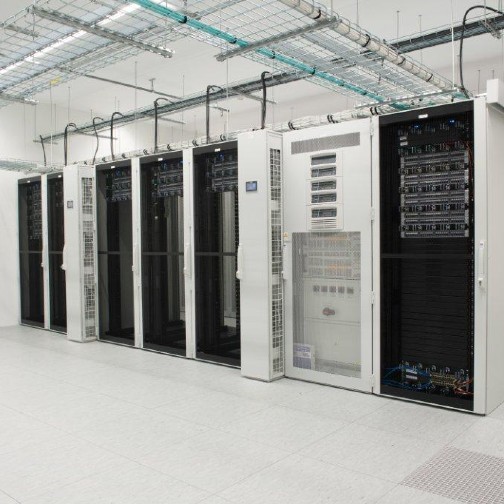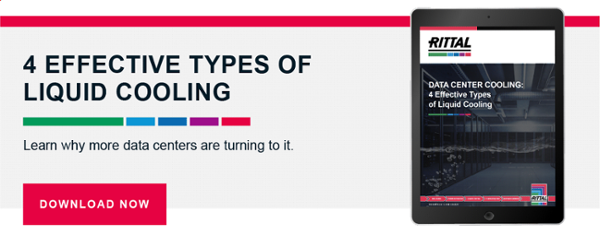Closet Data Centers Are At Risk for System Failure. Liquid Cooling is the Cure.
Any discussion about today’s IT spaces, especially for the enterprise data center, either focuses on or eventually comes down to cooling efficiency. Because of the significant cost (about 40% of their total energy bill) to keep equipment in large centers at optimum temperatures, rapid innovation has led to some meaningful improvements: In 2010, data centers consumed roughly 1% of electricity use worldwide, according to a study published in Science magazine. By 2018, while internet traffic had grown 10-fold, data center energy use grew only 6%.
Read Here: Data Center Cooling-The Best Methods for Different Needs
Energy usage by data centers will continue to increase, supporting the tremendous demands placed on the Internet and every running application, as well as providing reliable power to all the new facilities coming on line. In the hyperscale space, operators are keenly aware of improving efficiencies. This same focus can now be applied to new spaces supporting Edge applications.
But what about all the closet data centers around the world? Or as they are now known as - Edge Data Centers. Small and medium-sized businesses are placing their IT equipment in unused office spaces, basement storage areas, remote corners of larger rooms...anywhere they can fit them, basically. Starting with just a rack or two, maybe expanding to 10 - 20 footprints, are climate control and efficiency as hot a topic as they are in larger data centers?
A report titled “Shining A Light on Small Data Centers in the U.S.” by Lawrence Berkeley National Laboratory found that servers in small centers make up about 40% of installed server stock, with most of them running just one or two servers. But despite their numbers, they get less attention in discussions about energy efficiency and cooling. Small data centers (those that take up less and 101 sq. ft.), the study says, are most prevalent in the medical, retail, office and education sectors, and typically lack dedicated climate control, relying instead on cooling systems that serve a larger part of the building. Some have no cooling at all.
When these small sites do have dedicated cooling, the type of cooling is tightly correlated to the number of server racks and IT appliances: the fewer the racks, the less efficient the cooling.
The danger of ignoring the need for proper thermal management in these non-traditional spaces is just as significant as in large data centers. An improperly maintained server room climate can lead to temperature and/or humidity spikes and result in costly downtime and the loss of critical data.
Is Building Air Conditioning Enough?
Some organizations will simply make sure the data center closet has air conditioning vents and return air ducts, using the building’s HVAC to keep IT equipment cool. But there are several downsides to this approach:
- If there are high rack densities in the room, the building’s AC likely will not be able to deliver enough cold air to cool the equipment
- In warm climates and during summer in cold climates, most buildings reduce operating costs by moderating the temperature overnight and on weekends. The data center closet will become warmer – possibly too warm for reliable performance
- Cold air’s path to the servers could be long, making it difficult to maintain the right temperature
- There simply may not be enough extra capacity in the facility system to support the additional thermal loads, even if only a 100kW or less.
Other Insufficient Data Room Cooling Options
- Portable AC units are sometimes used to boost the efficiency of the building HVAC. The primary downside of this method is the cost, but also lack the ability to monitor their ongoing functioning
- Perhaps the worst (yet fairly common) approach is to simply keep the closet door open to allow some heated air to escape. Risks include security breaches, inability to monitor temperature, and poor reliability
Building air conditioning, portable room systems and setting the door ajar are common approaches to cooling small data centers not because they’ve been proven effective; they are common because it is “easy” and can be executed using the building’s existing infrastructure.
Hmmm. If only there were a simple, scalable, reliable way to efficiently cool small data centers…
Enclosure Cooling Solutions: The Best Method for Any Data Center
Small and medium-sized data centers are often confined to small spaces where the buildup of heat is likely to affect the operation of equipment, and there are liquid cooling solutions designed specifically for these factors. Unlike air cooling, which requires a great deal of power and introduces both pollutants and condensation into the data center, liquid cooling is cleaner, more targeted and scalable.
Of the IT enclosures (sometimes called cabinets) that support medium to high density cooling, Rittal’s LCP DX line offers what small data centers need most: efficiency, flexibility and scalability. Available in closed loop rack and open loop inline options (closed loop rack options require no changes to existing infrastructure), the cooling can be coupled with one or two enclosed racks, making them ideal in the uncontrolled environments found in medical, retail, office and education buildings. Here are a few of the benefits:
- Easy installation
- Variable capacity from 5-20kW
- Adaptable to a variety of installation sites
- Maintains set point temperature as heat loads vary
- Features eco-friendly refrigerant
- Small footprint
- Easily scalable to support multiple enclosures
- Ability to provide higher redundancy for more critical applications
These enclosure cooling units are also simple for staff to manage and are designed to reduce downtime: Electronic expansion valves allow you to quickly react to changing thermal loads and optimize system operation; remote notification is triggered when parameters deviate from set points; and fan replacement can be done without tools, while the unit is in operation.
Size doesn’t matter when it comes to basic data center needs. Whether you’re talking about massive facilities that span more than one million square feet or a small office building housing a single IT rack, cooling is a critical concern. Without proper climate control, equipment can fail, putting the business at a standstill. Fortunately, it’s simple for small data rooms to achieve high efficiency and uptime like larger data centers: enclosure cooling that creates the perfect climate for the equipment, that’s easy to monitor, that often requires no changes to infrastructure, and that’s easy for staff to manage.
Learn more about the options available to your small data center by downloading “Data Center Cooling: 4 Types of Liquid Cooling.” This white paper outlines features and benefits of the different types of liquid cooling and best applications for each.





